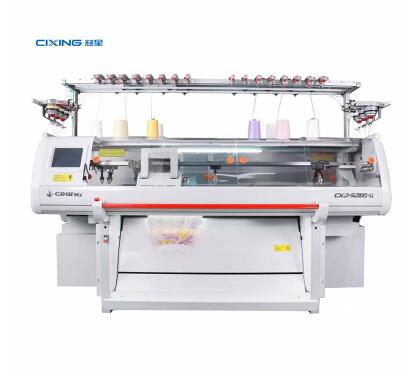How to Maintain Textile Machines for Optimal Performance
2024-08-10
Textile machines are the backbone of any textile manufacturing operation, and their proper maintenance is crucial for ensuring optimal performance and longevity. Regular maintenance not only helps prevent costly breakdowns but also improves the quality of the finished products. In this blog, we'll provide practical tips on how to maintain textile machines effectively, from routine inspections to essential cleaning practices.

1. Regular Inspection and Monitoring
The first step in maintaining textile machines is to establish a routine inspection schedule. Regular inspections help identify potential issues before they become major problems, allowing for timely repairs and adjustments. Key components to inspect include:
- Belts and Pulleys: Check for wear and tear on belts and pulleys, as these are critical for the smooth operation of the machine. Replace any damaged or frayed belts immediately to avoid slippage or machine downtime.
- Bearings: Inspect bearings for signs of wear, overheating, or unusual noise. Proper lubrication is essential to prevent bearing failure, so ensure that bearings are regularly lubricated according to the manufacturer's recommendations.
- Electrical Components: Monitor electrical connections, wiring, and control panels for signs of corrosion, loose connections, or overheating. Faulty electrical components can lead to machine malfunctions or safety hazards.
2. Lubrication and Oil Changes
Proper lubrication is essential for reducing friction and wear on moving parts. Different textile machines require different types of lubricants, so it's important to use the correct lubricant specified by the manufacturer. Regularly check and top up lubrication levels, and schedule oil changes as needed.
- Spinning Machines: Spinning machines, in particular, require regular oil changes to keep the spindles running smoothly. Dirty or degraded oil can cause friction and heat buildup, leading to potential damage.
- Weaving Machines: Weaving machines have many moving parts that require lubrication, including the shuttle, heddles, and cam system. Keep these parts well-lubricated to prevent wear and ensure smooth operation.
3. Cleaning and Dust Control
Textile machines are often exposed to lint, dust, and fibers, which can accumulate and cause blockages or damage over time. Implementing a regular cleaning routine is essential to keep the machines running efficiently.
- Dust Removal: Use compressed air or vacuum systems to remove dust and lint from machine components, especially around the drive mechanisms, sensors, and moving parts. Be cautious when using compressed air, as it can force debris into sensitive areas if not used properly.
- Cleaning Solutions: For components that require more thorough cleaning, use appropriate cleaning solutions and solvents recommended by the manufacturer. Avoid using harsh chemicals that could damage the machine's surfaces or components.
4. Calibration and Alignment
Over time, textile machines may lose their calibration or alignment, leading to issues such as uneven tension, misaligned needles, or incorrect fabric feed. Regularly check and adjust the calibration and alignment to ensure the machine is operating correctly.
- Tension Control: Check the tension settings on spinning and weaving machines to ensure they are within the recommended range. Incorrect tension can lead to broken threads, uneven fabric, or machine damage.
- Alignment Checks: On machines like knitting or embroidery machines, ensure that needles, guides, and other components are properly aligned. Misalignment can cause skipped stitches, fabric damage, or machine malfunctions.
5. Training and Documentation
Proper maintenance of textile machines requires a well-trained team that understands the specific requirements of each machine. Invest in regular training for your maintenance staff to ensure they are up-to-date on best practices and new technologies.
- Maintenance Logs: Keep detailed maintenance logs for each machine, documenting inspections, repairs, and parts replacements. This helps track the machine's history and identify recurring issues that may require more in-depth analysis.
Conclusion
Maintaining textile machines is a critical aspect of ensuring efficient and reliable textile production. By following a regular maintenance schedule, including inspections, lubrication, cleaning, and calibration, you can extend the lifespan of your machines and reduce the risk of costly downtime. Investing in proper maintenance practices not only improves the performance of your textile machines but also enhances the quality of your products, leading to greater customer satisfaction and business success.


